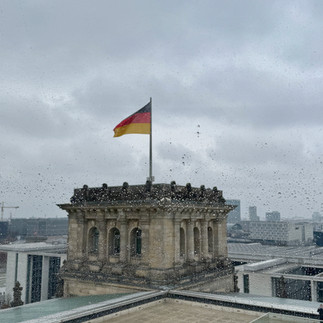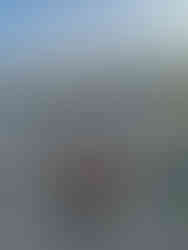Berlin, Germany
- Michael_sgrant
- 6 hours ago
- 4 min read
A city full of history - a guide around the capital of Germany...

At the Brandenburg Gate
Reichstag:
The Reichstag was known to be home to the Nazi leader party in the 20th Century when Hitler took over, until a fire broke out, 1 month after Adolf Hitler assumed the chancellorship, triggering events that led to Hitler's rise in power. But nowadays the Reichstag is a historic legislative government building in Berlin that is the seat of the German Bundestag. It is also the meeting place of the Federal Convention, which elects the President of Germany.
If you wish to enter the Reichstag, you can only do so by registering online to visit the glass dome on the roof of the building. I highly recommend doing so, and it's free! Click on this link here: German Bundestag - Registering to visit the dome of the Reichstag Building
Brandenburg Gate:

The Brandenburg Gate is one of the best known landmarks of Berlin, if not in all of Germany. It is an 18th-century neoclassical monument, it was erected on the site of a former city gate that marked the start of the road from Berlin to Brandenburg.
Supposedly, the Brandenburg Gate is a symbol of both Berlin and German unity, having served as a marker of division during the Cold War and now representing peace and reunification.
Memorial to the Murdered Jews of Europe:
The Memorial to the Murdered Jews of Europe, also known as the Holocaust Memorial, is a memorial in Berlin to the Jewish victims of the Holocaust committed by Nazi Germany. It consists of 2,711 concrete slabs, each uniquely planned to so that together they give the appearance of a wave-like ripple passing over an area that covers more than 19,000 square-metres. But why 2,711? I also asked myself that. The original plan was to place nearly 4,000 slabs but after the recalculation the number of slabs that could fit into the designated areas was 2,711.
Topography of Terror:
The Topography of Terror is an outdoor and indoor history museum which essentially guides you through Nazi history; the Gestapo, the SS, the Nazi political party, Adolf Hitler and all his henchmen. Entry is completely free. I actually spent a good 45mins here reading all the information; it was truly fascinating and really an eye opening on what happened there.
Berlin Cathedral:
The Berlin Cathedral or more locally known as the Berlin Dom, is definitely worth visiting. The magnificent dome of the Cathedral Church is one of the main landmarks in Berlin’s cityscape – and marks the spot of the impressive basilica housing the city’s most important Protestant church. With its elaborate decorative and ornamental designs, the church interior is especially worth seeing. I may warn you, if you wish to head up to the top of the dome it is not for the faint hearted, with over 270 steps, however the 360° panoramic view of Berlin's historic city centre is definitely worth it! Entry to the cathedral is €10.
Now let's check out some other places of interest around the city. Standing at 368m tall, the Berlin TV Tower offers incredible 360-degree panoramic views of the city. Tickets cost €25.50 to head up to the observation deck, and you can get yours here: Home - Berliner Fernsehturm. At the foot of the tower you can find St. Marienkirche (St Mary's Church), entry is free of course so feel free to wander inside. Make sure you head over to Checkpoint Charlie, a well known famous landmark in the centre of Berlin. Checkpoint Charlie became the most famous crossing point between East Berlin and West Berlin towards the end of the war. To learn more about it, you can head over to the exhibition just across the street. And lastly, visit Alexanderplatz, a square with a famous world clock but more than anything it is a place with an abundance of life; so many people walking around, shopping, and enjoying themselves, especially on a nice sunny day.
(Left) Berlin Tower, (Centre Left) Checkpoint Charlie, (Centre Right) St. Marienkirche, (Right) Alexanderplatz
Berlin Wall:
Last but no means least, we have the Berlin Wall, of course probably the most famous and historic landmark in the city. For anyone that doesn't know, this concrete barrier separating East and West Berlin, became a symbol of the Cold War, built in 1961 and standing until its fall in 1989, marking a pivotal moment in history. The Berlin Wall has long since disappeared from reunified Berlin, but remains and traces of the former border installations are being preserved for posterity, and memorials have been built. The best places to find the wall are along the Spree River, at the East Side Gallery & the Wall Museum.
One of the most iconic murals on the Berlin Wall is one depicting two men kissing; a reproduction of a photograph taken in 1979 showing Leonid Brezhnev, the General Secretary of the Soviet Union, and Erich Honecker, the leader of East Germany, during a socialist fraternal greeting.
(Left) Me at the Berlin Wall along the Spree River, (Centre) Segments of the wall dotted around the city, (Right) the famous kiss
Just wait until next month for the next trip! See you soon!



































Comments